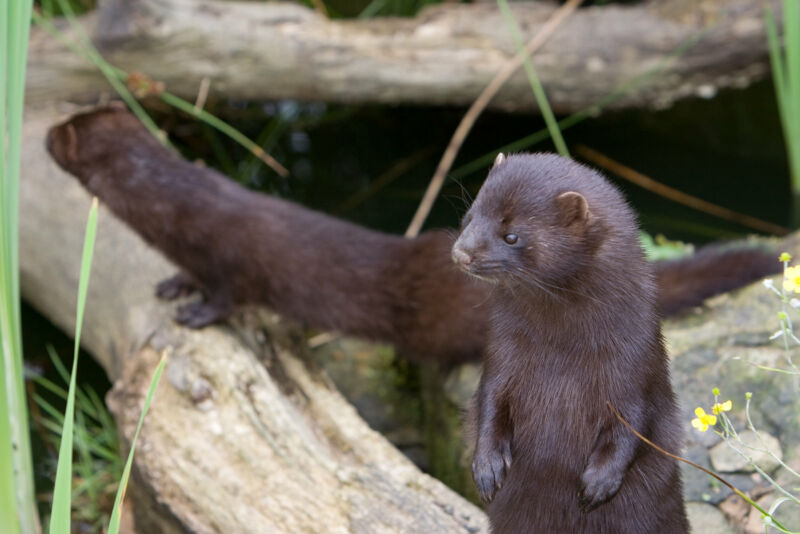Dutch scientists reconstruct spread of coronavirus through mink farms

Enlarge (credit: Marc Evans / Flickr)
It's still not clear what species carried the SARS-CoV-2 coronavirus that made its way into humans. But it has become increasingly clear that we can spread it to a large number of species, and a subset of those species are then able to pass it on to others. If those species are able to pass it back to humans, it adds to the risk posed by the COVID-19 pandemic. That's because it provides a route for new infections that avoids all of the means we're using to try to control the virus's spread between humans. And there's also the chance that the virus's reproduction within an animal species would select for a mutation that would make the virus more dangerous to humans.
While we've already found the virus in cats and dogs, the big risk so far has turned out to be an unexpected source: mink. As early as August, it was clear that the virus was killing lots of the animals on US mink farms. Earlier this month, the discovery that the virus had spread back from mink to humans caused Denmark to decide to cull its entire population of mink. Now, with some people on edge because of that drastic action, we have a report that provides detailed tracing of the virus' spread between mink and humans, providing us a better sense of the risks involved.
There and back againThe work was done in the Netherlands, which also hosts a substantial number of mink farms. The new paper, written by public health and veterinary officials, is essentially the equivalent of a contact-tracing report done for mink. It uses a combination of diagnostics to identify people and animals that have been exposed to the SARS-CoV-2, whole genome sequencing to understand the source of those infections, and interviews (limited to the humans) to help determine any actions that might influence the virus's spread.
Read 10 remaining paragraphs | Comments